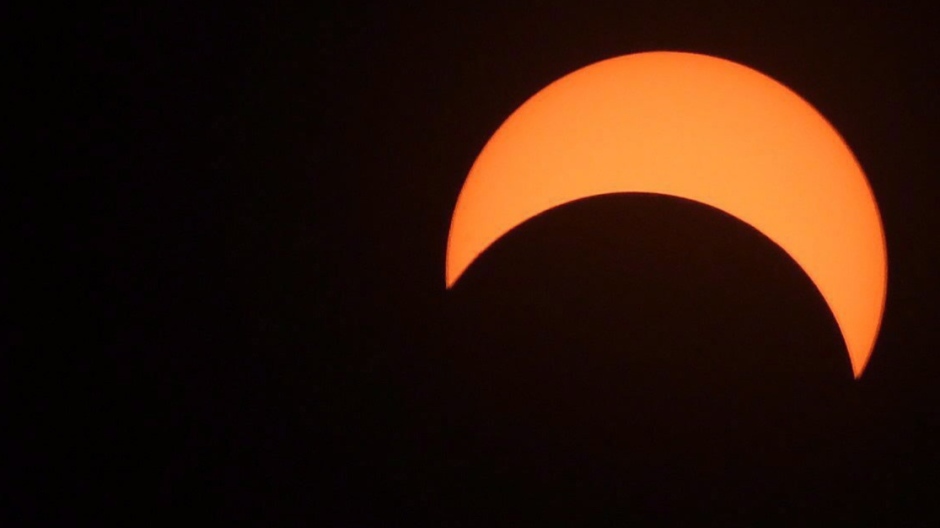
Starting right before noon on Saturday, the moon will begin to cover the Sun, causing it to look like a crescent shape from the province’s viewpoint.
“The coolest part of the eclipse is when the moon covers most of the Sun, which will happen at different times depending on where you are in Ontario. But in Toronto, this maximum should appear at around 1:09 p.m.,” researcher-programmer for astronomy and space sciences at the Ontario Science Centre, Daliah Bibas, told CTV News Toronto, adding the whole eclipse will go on for about two-and-a-half hours.
While it will be a partial eclipse for Ontario, this eclipse will appear like a “ring of fire” – known as an annular eclipse – in parts of the United States. The moon is a bit further away during these eclipses, so it will never fully block the light from the Sun (hence its name).
“So in B.C. … they get the best visibility (in Canada), reaching almost 80 per cent of the partial eclipse,” Bibas said.
It is not safe to directly look at a solar eclipse with your bare eyes, Bibas notes, as it can cause damage.
“Make sure to get certified solar viewing glasses to stay safe,” Bibas said. These glasses contain a solar filter that reduces the harmful ultraviolet light.
“If you don’t have a pair of these proper solar viewing glasses to directly watch the eclipse, there are also indirect ways to see it. For a simple method … you hold up (a) piece of paper with a hole and let the Sun’s light come through, and if you put another piece of paper on the ground, you’ll see a small dot of light that becomes visible on the page, which is actually a projection of the Sun.”
Bibas said this can also be done with pretty much any object that has small holes, like a spatula, Ritz crackers, or even through interlaced fingers, so long as the light can cast through and project onto the ground. Bibas added the Ontario Science Centre will also be holding a solar exploration Saturday to safely observe the eclipse.
The last total eclipse visible in Canada was 2017. While this month’s celestial event won’t be a total eclipse, Torontonians will have a chance to see one in just six months on April 8.
“It’s going to be actually 99.9 per cent, almost a total eclipse,” Bibas said. “We’re almost in the path of totality.”
After April, Ontarians will have to wait until 2029 to view the next partial solar eclipse, where according to timeanddate.com – a site that tracks all eclipses until 2199 – a partial eclipse will be visible from Toronto. The next total eclipse visible in Canada won’t be until 2044, according to the website.






